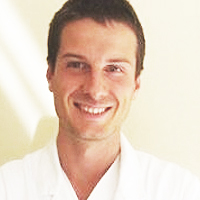Impact of mandibular advancement device in quantitative electroencephalogram and sleep quality in mild to severe obstructive sleep apnea
Published on: 30th December, 2020
OCLC Number/Unique Identifier: 8899350400
Sleep related breathing disorders (SRBD) are among seven well-established major categories of sleep disorders defined in the third edition of The International Classification of Sleep Disorders (ICSD-3), and Obstructive Sleep Apnea (OSA) is the most common SRBD [1,2]. Several studies have demonstrated that obstructive sleep apnea treatment increases the quality of life in OSA patients [3-8]. Indeed, excessive daytime sleepiness (EDS), cognitive impairment (e.g., deficits in attention-concentration, memory, dexterity, and creativity), traffic accidents, and deterioration of social activities are frequently reported in untreated patients [9-11]. Furthermore, an increase in cardiovascular morbidities and mortality (systemic hypertension, stroke, cardiac arrhythmias, pulmonary arterial hypertension, heart failure) [12], metabolic dysfunction, cerebrovascular ischemic events and chemical/structural central nervous system cellular injuries (gray/white matter) has been reported in OSA patients [13-17].
Continuous positive airway pressure (CPAP) therapy is considered the gold standard for treatment of moderate-severe OSA, nevertheless there is an increasing body of evidence supporting the usefulness of mandibular advancement devices (MADs) for improving quality of life and respiratory parameters even among patients with a high severity of OSA burden [5,10,18,19]. According to the standard of care of the American Academy of Sleep Medicine (AASM), MADs are indicated for mild to moderate OSA particularly in the context of CPAP intolerance or refusal, surgical contraindication, or the need for a short-term substitute therapy [9,15,20-22]. In Cuba, CPAP machines are not readily available; they are expensive and the majority of OSA patients cannot obtain this mode of therapy. Taking into account this problem, our hypothesis was based in the scientific evidences of MAD effectiveness, considering that low cost MADs could offer a reasonable alternative treatment for patients with OSA where CPAP technology are not handy. In this way our purpose was to assess the efficacy of one of the most simple, low cost, manufactured monoblock MAD models (SAS de Zúrich) in terms of improvements in cerebral function, sleep quality and drowsiness reports in a group of Cuban OSA patients with mild to severe disease. Outcome measures included changes in the brain electrical activity, sleep quality, and respiratory parameters, measured by EEG recording with qEEG analysis and polysomnographic studies correspondingly, which were recorded before and during treatment with an MAD, as well as subjective/objective improvements in daytime alertness.
Non-alcoholic fatty liver disease: Update on treatment options and translational implications of sleep disruption
Published on: 17th August, 2021
OCLC Number/Unique Identifier: 9206109721
Non-alcoholic fatty liver disease (NAFLD) is a condition that is associated with cirrhosis and hepatocellular carcinoma, and is increasing in prevalence worldwide. Sleep disruptions are commonly seen in NAFLD, and the disease process is associated with sleep disorders, including obstructive sleep apnea, circadian rhythm disorders, and insufficient sleep. The intermittent hypoxia seen in obstructive sleep apnea may contribute to fibrotic changes in the liver.A major component of this linkage may be related to gut microbiome changes. One notable change is increase in Bacteroidetes/Firmicutes ratio, and decrease in flora that ferment fiber into anti-inflammatory short-chain fatty acids. Several therapeutic options exist for NAFLD that target both sleep and NAFLD, including non-pharmacological factors, such as lifestyle modification (mainly diet and exercise). Pharmacological options include melatonin, Vitamin E, thiazolidinediones, and fecal microbiota transplantation.Core tipThe pathogenesis of non-alcoholic fatty liver disease is closely tied to sleep and circadian rhythm abnormalities, through shared inflammatory pathways and altered metabolism. This review explores the pathogenesis of NAFLD in the context of sleep and circadian abnormalities. The associated inflammatory response is linked to changes in gut-microbiome interactions that contribute to the disease process. Understanding of this linkage has implications for various therapies for disease mitigation.
Differentiation of the Non-dipping Blood Pressure Phenotype in Obstructive Sleep Apnea: An Observational Study
Published on: 15th May, 2025
Background: Absence of nocturnal decrease in Blood Pressure (BP) (“non-dipping”) has been shown to be a strong and independent predictor of cardiovascular events, target organ damage, cardiovascular sequela and cardiovascular mortality. Obstructive Sleep Apnea (OSA) has been associated with non-dipping with an estimated prevalence of approximately 50%, but factors associated with non-dipping in OSA patients remain poorly understood. In this study, we examined clinically relevant variables associated with non-dipping in OSA.Methods: Patients (n = 35) undergoing overnight valuation for OSA, laboratory-based polysomnography, structured clinical interviews, and comprehensive metabolic and anthropometric evaluations, and ambulatory BP monitoring for 24 hours. Patients were classified into a) dipping BP group or b) non-dipping BP group, based on (a) a nocturnal systolic BP decrease of 10% - 20% or (b) a systolic BP decrease of < 10%. Results: Patients had moderate and severe OSA (AHI = 34.8 ± 29.1), and 42.9% demonstrated a non-dipping BP pattern. The severity of OSA measures did not differ between dipping group and non-dipping group. However, Wake after Sleep Onset (WASO) and chronicity of insomnia predicts non-dipping BP independent of demographics, sleep stages, anthropometrics, metabolic measures, or arterial stiffness. Conclusion: These findings contribute to a better understanding of the cardiovascular impacts of OSA and indicate that sleep quality should be incorporated into clinical assessments and management of OSA patients.




